Last Updated on August 14, 2024 by teamobn
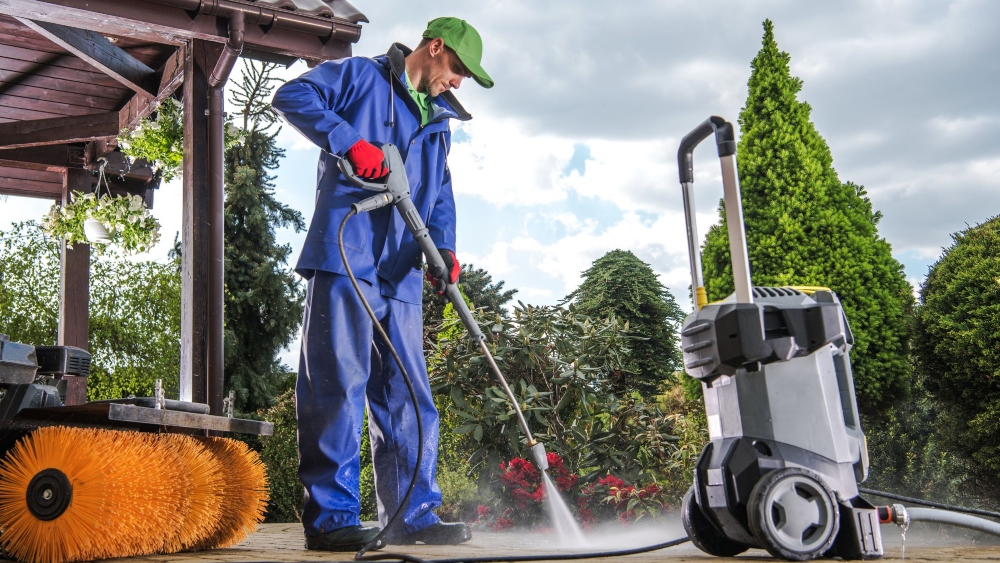
Power washers are indispensable tools for homeowners and professionals alike. It can efficiently clean decks, driveways, and much more. However, the effectiveness of a pressure washer can be significantly compromised by common missteps.
These blunders can turn a powerful cleaning tool into a source of frustration and even damage. In this article, we will explore the most common mistakes to avoid and provide practical tips to help you use your pressure washer.
Contents [show]
- 1 Common Power Washer Mistakes
- 1.1 Choosing the Wrong Pressure Setting
- 1.2 Ignoring the Importance of Nozzle Selection
- 1.3 Neglecting Power Washer Maintenance
- 1.4 Using Inappropriate Cleaning Solutions
- 1.5 Overlooking Safety Precautions
- 1.6 Starting the Cleaning Process Incorrectly
- 1.7 Applying Too Much Force on Delicate Surfaces
- 1.8 Overwashing Areas
- 1.9 Ignoring Environmental Considerations
- 1.10 Failing to Plan the Cleaning Sequence
- 2 Factors to Consider When Buying a Power Washer
- 3 Conclusion
Common Power Washer Mistakes
Choosing the Wrong Pressure Setting
One of the most common mistakes made while using a power washer is choosing an unsuitable pressure level for the current work at hand. From soft wood to strong concrete, every surface type has the perfect pressure setting to efficiently remove dirt without damage.
While too low a pressure may not adequately clean the surface, leaving dirt and grime behind, too strong a pressure on softer materials might etch lines, remove paint, or even gouge wood. Starting with a lesser pressure and then progressively raising it will help you to get the intended cleaning effect without damaging the surface.
Ignoring the Importance of Nozzle Selection
The results of your cleaning are largely influenced by the power washer’s nozzle. Nozzles control the water flow, influencing the jet’s spread and strength. Common nozzles 0 °, 15°, 25°, and 40° fit varying degrees of cleaning and kinds of surfaces.
A zero-degree nozzle, for instance, generates a concentrated spray perfect for difficult stain removal on hard surfaces but may be too strong on softer surfaces. Using the incorrect nozzle not only runs the danger of ruining the surface but also lessens the effectiveness of your cleaning operations. Take advantage of the different nozzles.
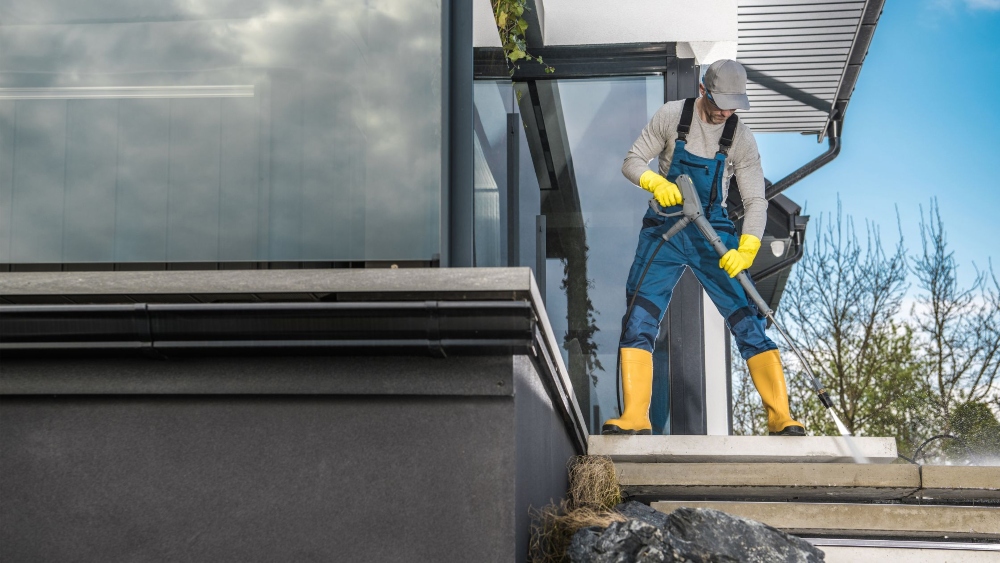
Neglecting Power Washer Maintenance
Routine maintenance is essential for maintaining top working conditions for your power washers. Many consumers ignore this feature, which can result in possible mechanical breakdowns and worse performance. Basic maintenance chores include routinely checking the engine oil, checking hoses for leaks or wear, cleaning or replacing air and fuel filters, and making sure the water inlet is free from trash.
Moreover, in colder climates, adequate winterizing of the machine is crucial to avoid freezing and breaking. This process involves removing the fuel from gas-operated power washers and oil checks. Ignoring these maintenance chores can result in expensive repairs and reduce the lifetime of your power washer.
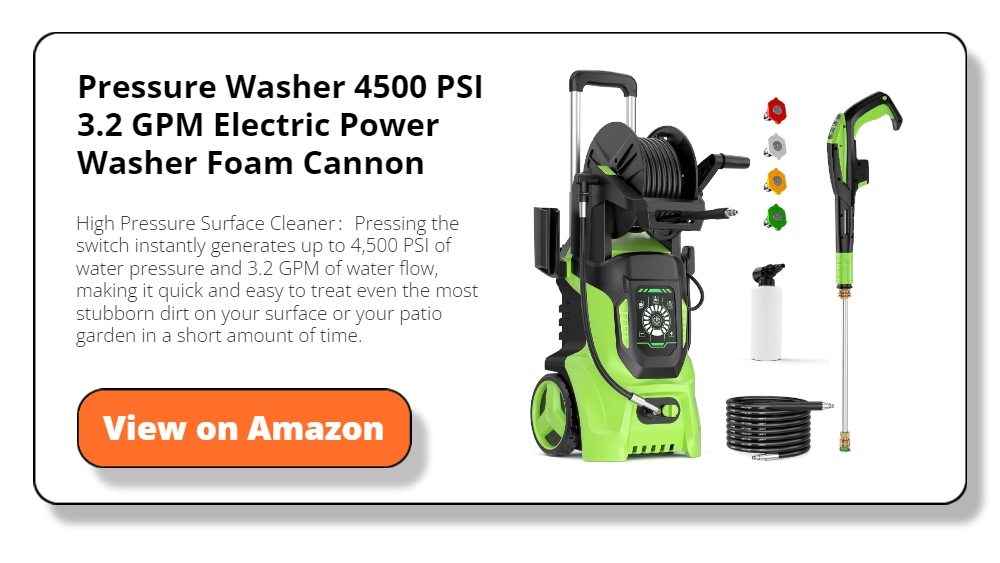
Using Inappropriate Cleaning Solutions
Choosing the correct cleaning solution is essential for effective and safe power washing. Many users mistakenly believe that any detergent or chemical cleaner will do, but this can lead to unsatisfactory results or even damage to the surface. Some surfaces require specific cleaners designed to break down particular types of grime without harming the material. For example, a solution meant for concrete might be too harsh for vinyl siding.
Furthermore, the misuse of harsh chemicals can harm the environment. It’s crucial to select eco-friendly and appropriate cleaners for the task and surface at hand to ensure thorough cleaning that’s also safe for the material and surroundings. A good example is Simple Green Outdoor Cleaner, which became part of the EPA’s Safer Choice Program’s products.
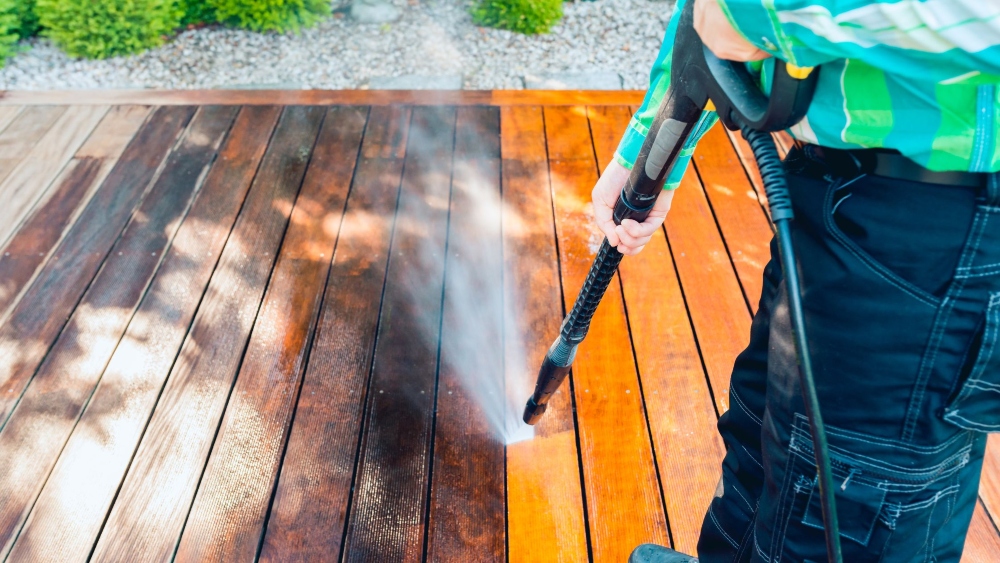
Overlooking Safety Precautions
Power washers, with their high-pressure spray, can pose serious safety risks if handled carelessly. Common safety mistakes include not wearing protective gear like goggles and gloves, which can lead to injuries from flying debris or chemical burns from cleaning solutions.
It is also important to be aware of your surroundings, especially avoiding spraying towards people, pets, or electrical outlets. A slip-up in handling can result in severe injuries or property damage. Ensuring you adhere to safety protocols and wear the appropriate safety equipment protects both the operator and others in the vicinity.
Starting the Cleaning Process Incorrectly
The initial setup and starting procedure of a power washing project are often underestimated, leading to poor cleaning performance or damage to the power washer itself. Many users jump straight into spraying without properly preparing the surface or the machine. It is important to clear the area of movable objects, check for any hazards, and ensure all connections are secure.
Additionally, starting the spray on a low setting allows you to gauge the surface reaction before fully committing to a higher pressure. An organized and cautious start will not only enhance cleaning efficiency but also extend the life of your power washer.
Applying Too Much Force on Delicate Surfaces
Power washers can quickly become destructive if used with too much force on sensitive surfaces. Delicate materials like softwood, stucco, or older masonry can sustain serious damage under high-pressure water streams. This common mistake occurs when the operator either chooses too high a pressure setting or uses a nozzle that emits a very concentrated stream.
The ideal approach is to always start with the gentlest setting and gradually increase pressure only as needed. Additionally, using a wider-angle nozzle can help distribute the force more evenly, reducing the risk of damage. Testing on a small, inconspicuous area first can also prevent widespread harm to delicate surfaces.
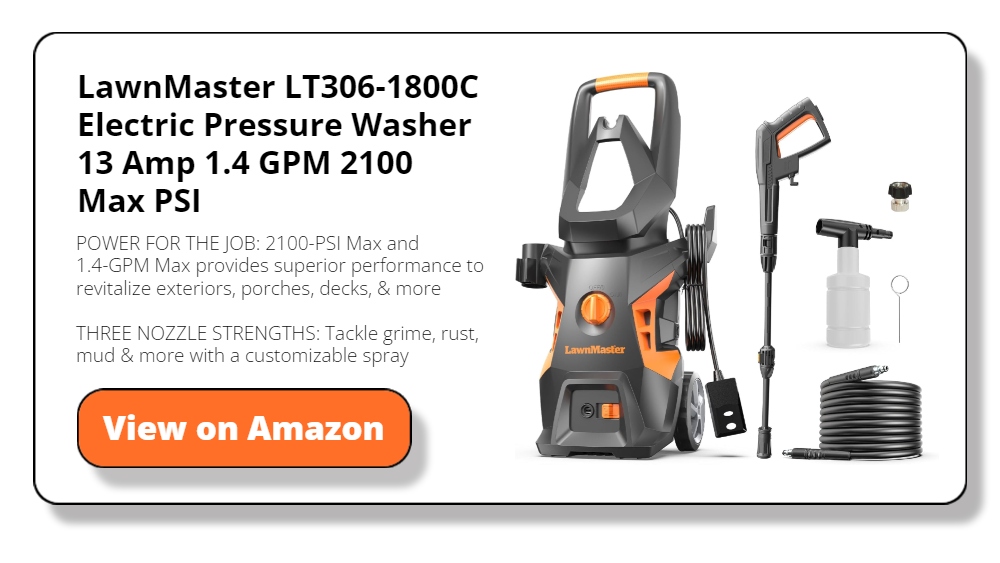
Overwashing Areas
Focusing too long on one spot is a typical error that can lead to uneven cleaning and, in some cases, surface damage. This is especially problematic on surfaces like wood, where prolonged exposure to high pressure can strip away layers and create visible marks.
To avoid overwashing, keeping the nozzle moving in a consistent, sweeping motion is crucial. Plan your strokes to overlap slightly, ensuring thorough coverage without lingering too long in any single area. Timing your movements and paying attention to the cleaning process as you go can help maintain a uniform clean and protect the integrity of the surface.
Ignoring Environmental Considerations
Environmental factors are often overlooked when power washing, yet they can significantly impact both the efficacy and safety of the cleaning process. For example, washing on a windy day can cause spray and chemicals to drift to unwanted areas, potentially harming nearby plants or contaminating water sources.
Furthermore, the type of detergent used can affect local wildlife and water quality if runoff is not managed properly. It’s important to use biodegradable and environmentally friendly cleaning solutions and to be mindful of water usage and containment. Planning your cleaning for calm, dry days and ensuring proper runoff management can prevent environmental hazards and ensure a more sustainable cleaning practice.
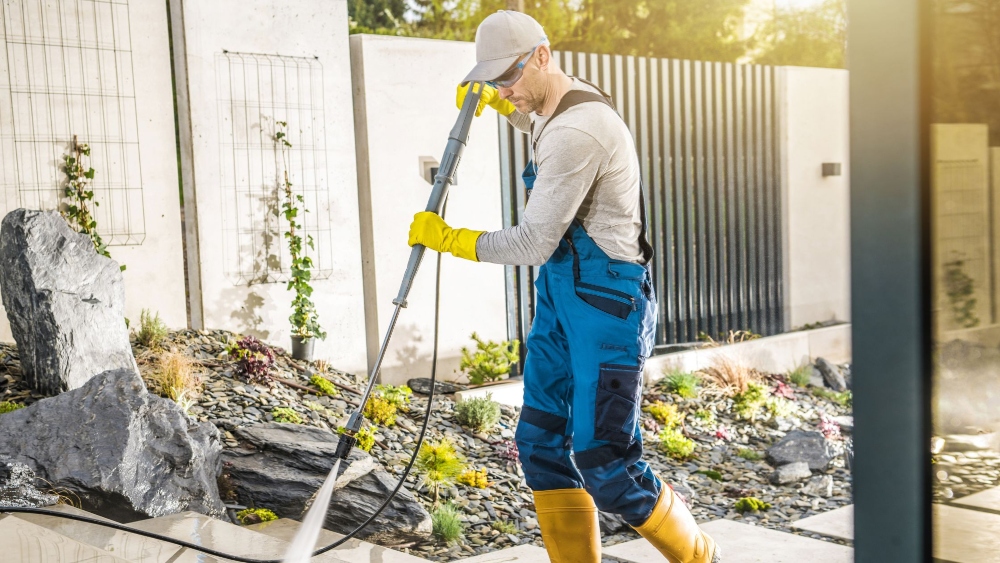
Failing to Plan the Cleaning Sequence
A lack of planning in the sequence of cleaning tasks can lead to inefficient cleaning and even re-soiling of cleaned areas. Starting from the top of a structure and working downward, for example, prevents dirty water and debris from contaminating areas already cleaned. Planning a logical path not only saves time but also conserves water and energy.
Before beginning, it’s advisable to sketch out a plan that includes tackling heavily soiled areas first and finishing with lighter clean-up tasks. This strategic approach ensures that each section is cleaned effectively and that the entire project maintains a high standard of cleanliness throughout the process.
Factors to Consider When Buying a Power Washer
Buying the wrong power washer is often the first blunder a homeowner makes. You can prevent this by knowing the important factors among pressure washers. Lets discuss those factors in details below.
Type of Power Washer
When choosing a power washer, one of the first decisions you’ll face is whether to opt for an electric or gas-powered model. Each type comes with distinct advantages and considerations:
- Electric Power Washers: Ideal for lighter, residential cleaning tasks such as washing cars, outdoor furniture, or small decks. These models are generally quieter, lighter, and easier to start and maintain than their gas counterparts. They require access to an electrical outlet, which can limit mobility but eliminates the need for fuel, making them more environmentally friendly.
- Gas-Powered Power Washers: These are preferred for commercial applications and heavy-duty residential tasks, like cleaning large decks, siding, and driveways. Gas models provide more power, allowing them to clean faster and more effectively. They are also more portable since they don’t require being tethered to an electrical outlet. However, they require more maintenance, are noisier, and produce emissions.
Choosing between an electric and gas-powered power washer largely depends on the scale of your cleaning tasks and your mobility needs.
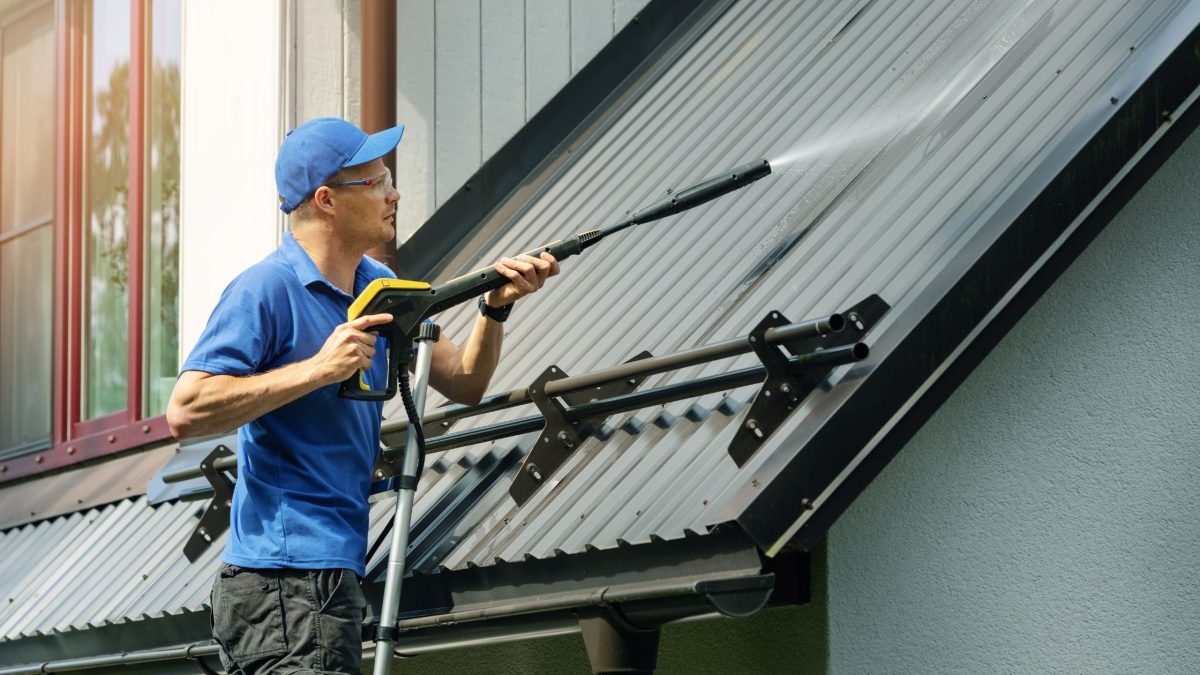
Power and Pressure
Understanding the power specifications of a power washer is crucial for selecting the right model. The effectiveness of a power washer is largely determined by its pressure output, measured in pounds per square inch (PSI), and its water flow rate, measured in gallons per minute (GPM).
- PSI (Pounds per Square Inch): This measures the pressure of water created through the power washer, which is critical for breaking down the dirt and grime on various surfaces. Residential models typically range from 1,300 to 2,800 PSI, which is sufficient for most home cleaning tasks. Professional models, on the other hand, can go above 3,000 PSI and are necessary for more demanding jobs.
- GPM (Gallons per Minute): This indicates how much water is flowing from the nozzle per minute, influencing how quickly you can wash a surface. A higher GPM can help rinse off debris more quickly, effectively reducing the overall cleaning time.
Balancing PSI and GPM is essential for achieving efficient cleaning without damaging surfaces. High PSI is great for stubborn stains and hard surfaces, but a high GPM rating is equally important for washing larger areas swiftly. When selecting a power washer, consider what you’ll be cleaning to determine the best combination of these specifications for your needs.
Portability and Size
Ease of Movement: Portability is a critical factor, especially if you need to maneuver your power washer across various locations or store it conveniently. Here are key aspects to consider:
- Weight and Size: Assess the weight and overall dimensions of the power washer. Lighter and more compact models are easier to move and store, ideal for residential use where space may be limited.
- Wheels and Handles: Look for models equipped with robust wheels and sturdy handles. These features greatly enhance maneuverability, allowing you to easily transport the unit over different terrains, such as gravel or grass, without strain.
- Storage: Consider how much storage space you have. Some power washers have a collapsible handle or a modular design that makes them more compact for storage in tight spaces like a garage shelf or a shed.
Choosing a model that balances portability with power ensures that you can handle various tasks around your property without hassle.
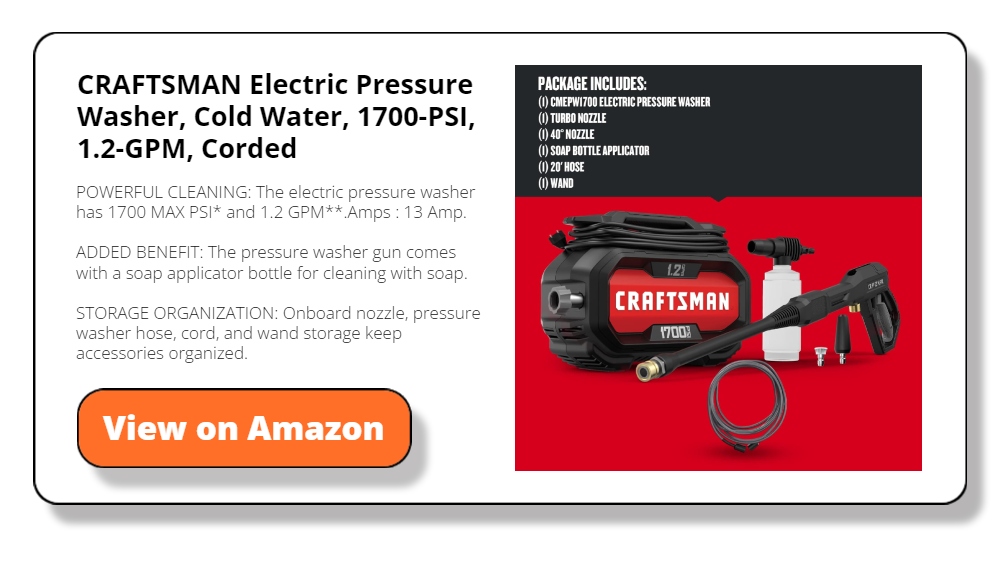
Durability and Build Quality
The durability of a power washer significantly impacts its longevity and reliability. Here are important factors to consider:
- Frame and Construction: The structural integrity of the power washer depends on the frame material. Stainless steel frames are highly durable and resistant to rust, making them ideal for frequent or commercial use. Plastic frames are lighter and suitable for occasional, light-duty tasks.
- Pump Type: The type of pump used in a power washer affects its durability. Triplex pumps are more robust and designed for heavy use, while axial cam pumps are suitable for moderate home use.
- Component Quality: High-quality components such as brass fittings and stainless steel nozzles resist wear and corrosion better than their cheaper counterparts. Investing in a power washer with high-quality components can prevent frequent replacements and maintenance issues.
- Seals and Hoses: Check the quality of seals and hoses. High-quality rubber hoses and strong seals can withstand high pressures and prevent leaks, which are common in lower-quality models.
Investing in a well-built power washer with durable materials and components not only extends the life of the machine but also ensures consistent performance under various conditions. It’s a worthwhile investment, particularly if you anticipate frequent or heavy-duty use.
Nozzle Options and Adjustability
The versatility of a power washer largely depends on its nozzle options, which dictate the angle and intensity of the water spray. Understanding and utilizing the right nozzles can greatly enhance cleaning efficiency and surface safety:
- Types of Nozzles: Power washers typically come with a set of interchangeable nozzles, each identified by a color corresponding to its spray angle. Common types include:
- Red (0 degrees): Provides a pinpoint, high-intensity jet for tough grime and stains on hard surfaces.
- Yellow (15 degrees): Offers a slightly wider angle suitable for stripping paint and cleaning concrete and metal.
- Green (25 degrees): Ideal for general cleaning on decks, siding, and fences.
- White (40 degrees): Produces a wider spray for gently cleaning windows, cars, and other delicate surfaces.
- Black (soap nozzle): Used for applying detergents at low pressure. This nozzle usually comes with a foam bottle to spray aerated detergent onto your surface. Soap nozzles are highly used in cleaning cars or other similar vehicles.
- Adjustability: Some models feature adjustable nozzles or a single, multi-function nozzle that can be twisted to change the spray pattern. This adjustability allows for seamless transitions between different cleaning tasks without the need to switch nozzles.
Choosing a power washer with a comprehensive set of nozzles or an adjustable nozzle allows you to tackle a wide range of cleaning tasks effectively and safely, making it a versatile addition to your cleaning arsenal.
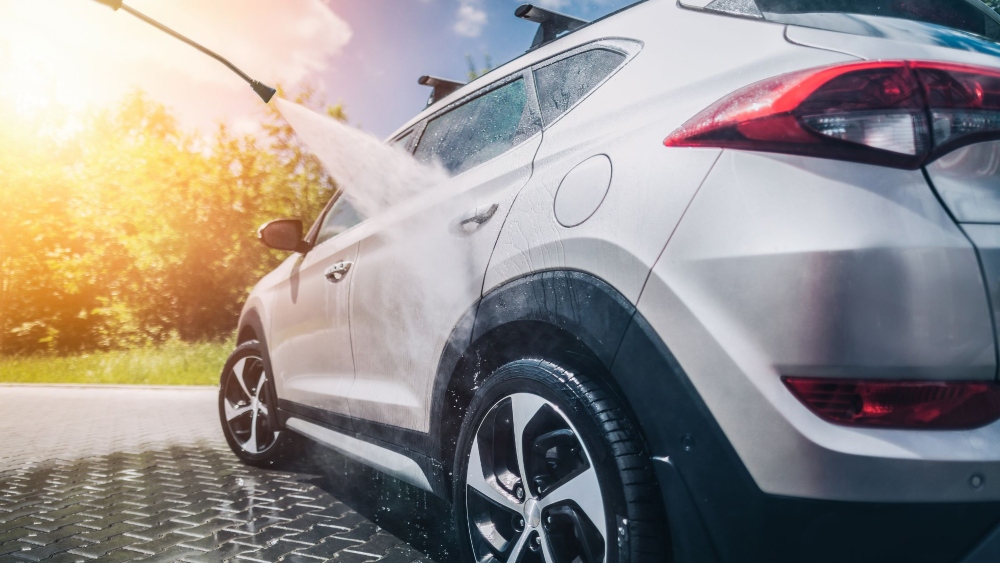
Water Temperature Options
The temperature of the water used by a power washer plays a crucial role in its cleaning effectiveness, especially when dealing with different types of dirt and stains:
- Cold Water Power Washers: These are the most common and are suitable for most residential cleaning tasks, such as washing cars, outdoor furniture, and siding. Cold water is effective for removing dirt, mud, and sand and is more cost-effective and easier to maintain than hot water models.
- Hot Water Power Washers: These units heat the water, which helps to more effectively break down oil, grease, and other stubborn substances. Hot water power washers are typically used in industrial or commercial settings, such as in automotive shops or for cleaning heavy machinery. They can also sanitize surfaces, making them ideal for food service or healthcare settings.
- Combination Units: Some high-end models offer both hot and cold water options, providing versatility for users who need both regular and heavy-duty cleaning capabilities. These units are perfect for those who deal with a variety of cleaning scenarios that may require different approaches.
When selecting a power washer, consider the typical substances you’ll be cleaning and whether hot water’s added cleaning power is necessary for your tasks. Hot water models are more expensive and require more maintenance but can provide superior cleaning results for certain grime and stains.
Conclusion
Understanding the common blunders associated with power washing, such as choosing the wrong pressure settings or neglecting maintenance, can prevent costly mistakes and surface damage. By considering crucial factors such as type, power, and nozzle options when purchasing a power washer, homeowners can ensure they select a machine that suits their specific cleaning needs. This knowledge not only enhances cleaning efficiency but also extends the device’s lifespan. Thus, making an informed decision when buying a power washer is a crucial step in avoiding these widespread errors and achieving optimal cleaning results.
























